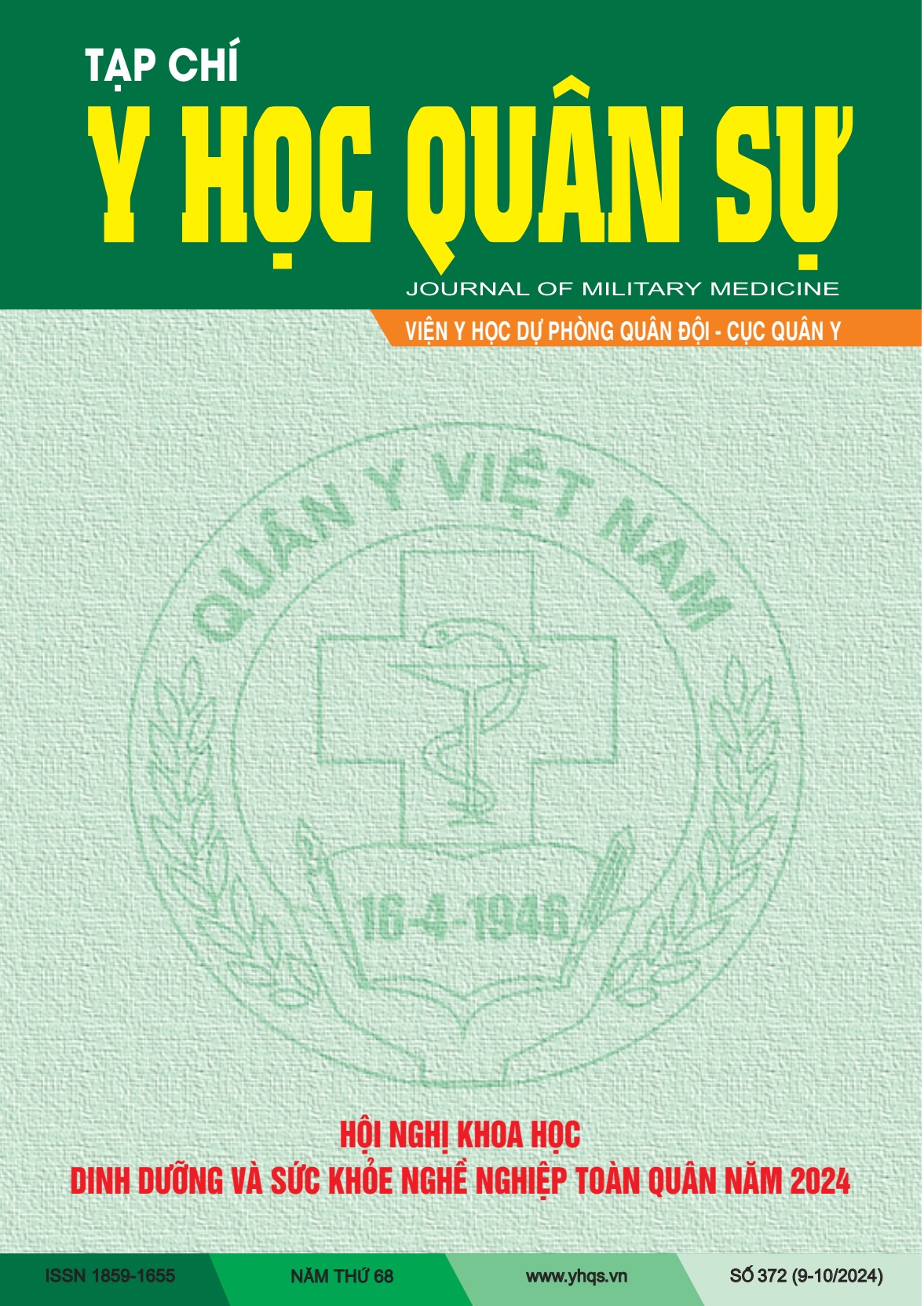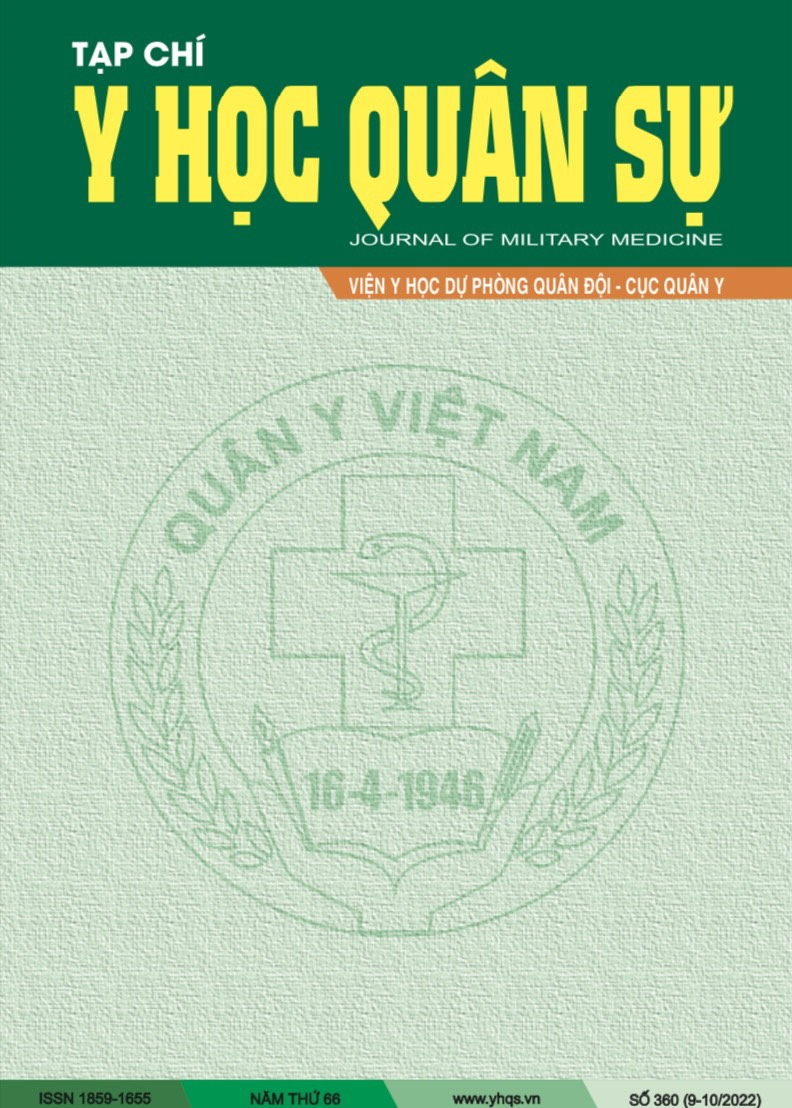ĐẶC ĐIỂM SINH HỌC CỦA CHỦNG XẠ KHUẨN Streptomyces MIP_SN16 PHÂN LẬP TỪ ĐẤT VÙNG RỄ CÂY NGHỆ (Curcuma longa L.) KHU VỰC TỈNH HƯNG YÊN
DOI:
https://doi.org/10.59459/1859-1655/JMM.454Từ khóa:
Đặc điểm sinh học, Đối kháng, Streptomyces, MIP_SN16Tóm tắt
Mục tiêu: Mô tả đặc điểm sinh học của chủng xạ khuẩn Streptomyces MIP_SN16 bao gồm đặc điểm hình thái, màu sắc khuẩn lạc, cấu trúc sinh bào tử, hoạt tính đối kháng với vi khuẩn Gram dương Bacillus cereus và Gram âm Escherichia coli, phân tích sự có mặt của các cụm gen sinh tổng hợp chất kháng sinh.
Đối tượng và phương pháp: Chủng xạ khuẩn Streptomyces MIP_SN16 được hoạt hóa từ bộ sưu tập chủng vi sinh vật tại Khoa Vi sinh vật - Viện Y học Dự phòng Quân đội. Đặc điểm hình thái, màu sắc khuẩn lạc, cấu trúc sinh bào tử được mô tả theo phương pháp của Tresner (1963); Hoạt tính đối kháng với vi khuẩn B. cereus và E. coli được thực hiện theo phương pháp của Kirby-Bauer (2009). Sử dụng phương pháp PCR với các cặp mồi đặc hiệu, các gen pksI, pksII, nrps được khuếch đại nhằm phát hiện sự có mặt của chúng trong hệ gen chủng xạ khuẩn Streptomyces MIP_SN16.
Kết quả: Xạ khuẩn Streptomyces MIP_SN16 thuộc nhóm màu xám, sinh trưởng ở nhiệt độ 25-35oC; pH môi trường 7; Chủng Streptomyces MIP_SN16 đối kháng với B.cereus, E. Coli, với đường kính vòng vô khuẩn lần lượt là 22 mm và 18 ± 2 mm. Dựa vào nghiên cứu đặc điểm sinh học và phân tích trình tự gen mã hóa 16S rRNA, chủng MIP_SN16 có độ tương đồng 100% với chủng Streptomyces albogriseolus IR-SGS-T10 trên GenBank, do đó được đặt tên là S. albogrioseolus MIP_SN16. Phân tích sự có mặt của gen chức năng liên quan đến sinh tổng hợp kháng sinh cho thấy chủng S. albogriseolus MIP_SN16 mang hai gen mã hóa enzyme Polyketide Synthease (PKS) I và II. Như vậy, chủng S. albogriseolus MIP_SN16 có tiềm năng cao trong nghiên cứu sinh tổng hợp kháng sinh.
Tài liệu tham khảo
Priya, et al (2012), “Detection of antioxidant and antimicrobial activities in marine actinomycetes isolated from Puducherry coastal region”, Journal of Modern Biotechnology, 1: 63-69.
Waksman, Henrici, et al (1943), “The nomenclature and classification of the Actinomycetes”, Journal of Bacteriology, 46: 337-341.
Nayaka, Babu, et al (2014), “Isolation, identification and characterization of keratin degrading Streptomyces albus”, International Journal of Current Microbiology and Applied Sciences, 3: 419-431.
Jan Hudzicki (2009), “Kirby-Bauer Disk Diffusion Susceptibility Test Protocol”, American Society for Microbiology.
Nguyễn Lân Dũng (dịch, 1983), “Thực tập vi sinh vật học”, Nhà xuất bản Khoa học và kĩ thuật, Hà Nội, tr. 73-81.
Nonomura H (1974), “Key for classification and identification of 458 spieces of the Streptomyces included in ISP”, Technol, 52, 78-92.
Pridham T.G, Gottlieb D (1948), “The utilization of carbon compounds by some Actinomycetales as an aid for species determination”, J. Bacterol, 56: 107-114.
Williams S.T, et al (1989), “Bergey’s mannual of systematic bacteriology”, Williams & Wilkins, 4: 2451-2492.
Tresner H.D, Bergey E.J (1963), “System of color wheels for Streptomycete Taxonomy”, Appl. Micorbiol., 11: 8-16.
Shirling E.B, Gotllieb D (1966), “Methods for characterization of streptomycetes sp”, Int J Syst Bacteriol, 16: 313-40.
F.A Ripa, et al (2009), “Optimal conditions for antimicrobial metabolites production from a new Streptomyces sp. RUPA-08PR isolated from Bangladeshi soil”, Mycobiology, 37: 211-214.
Sutthinan Khamna, et al (2009), “Actinomycetes isolated from medicinal plant rhizosphere soils: Diversity and screening of antifungal compounds, indole-3-acetic acid and siderophore production”, World Journal of Microbiology and Biotechnology, 25: 649-655.
Khullakpam Shaheen, et al (2022), “Isolation and bioactivity screening of Streptomyces spp. associated with Curcuma caesia (Yaimu) from Manipur, India”, Flora and fauna, 28: 177-190.
Charu Singh, et al. (2017), “Optimization of Cultural Conditions for Production of Antifungal Bioactive Metabolites by Streptomyces spp. Isolated from Soil”, International Journal of Current Microbiology and Applied Sciences, 6: 386-396.
Basak, et al (1973), “Utilization of carbon and nitrogen sources by Streptomyces kanamyceticus for kanamycin production”, Antimicrob. Agents Chemother, 4: 6-10.
Shikuku, et al (2023), “Effect of pH, Carbon and Nitrogen Sources on Antibiotic Production by Actinomycetes Isolates from River Tana and Lake Elementaita, Kenya”, Asian Journal of Research in Biochemistry, 13.
Pandey, et al (2005), “Utilization of carbon and nitrogen sources by Streptomyces kanamyceticus M 27 for the production of an Anti bacterial antibiotic”, African Journal of Biotechnology, 4: 909-910.
O Cédric, et al (2013), “Tool for characterizing bacterial protein synthesis inhibitors”, Antimicrob. Agent Chemother, 57: 5994-6004.
Thirumurugan, et al (2018), “ Isolation, structure elucidation and antibacterial activity of methyl-4,8-dimethylundecanate from the marine actinobacterium Streptomyces albogriseolus ECR64”, Microbial Pathogenesis, 121: 166-172.
Mohamed S Abdel-Aziz, et al (2013), “Bioactive Secondary Metabolites from Marine Streptomyces albogriseolus Isolated from Red Sea Coast”, Journal of Applied Sciences Research, 9: 996-1003.
Shaza, et al (2019), “Molecular characterization of Streptomyces albogriseolus excellent mutants for neomycin production”, J Pure Appl Microbiol, 13: 1489-1498.
Tải xuống
Đã Xuất bản
Cách trích dẫn
Số
Chuyên mục
Chấp nhận đăng 06-08-2024
Ngày xuất bản 08-10-2024



